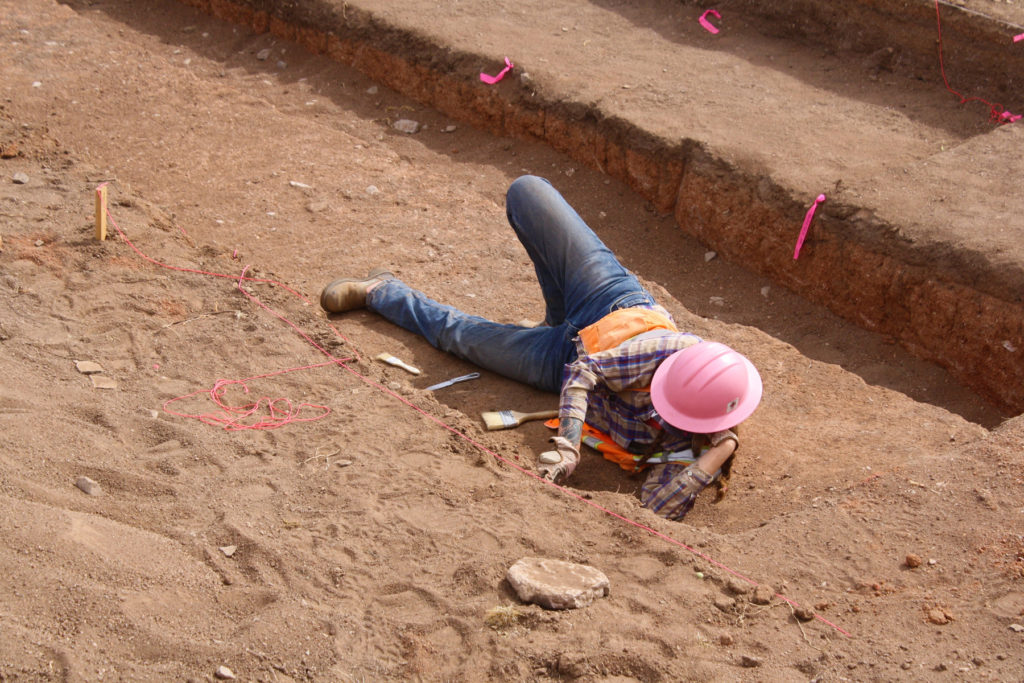- Home
- >
- Preservation Archaeology Blog
- >
- Excavating a Hohokam Ballcourt
(July 27, 2018)—One of the best things about being a Preservation Fellow at Archaeology Southwest is that I sometimes have the opportunity to collaborate with people from other organizations. A few months ago, some of our friends and colleagues at Desert Archaeology and Logan Simpson, two cultural resource management companies in Tucson, unexpectedly found a Hohokam ballcourt while excavating a site north of town. Because they know I’m studying ballcourts as part of my dissertation research, they asked whether I might want to come out and take a look and help excavate a portion of it? Yes, please!
The project area was in a road right-of-way and had been bladed flat by heavy machinery at some point in the past, so none of the usual indications of a ballcourt—the earthen berms—were visible at the surface. The project area was pretty narrow, only 10 feet wide, and the original backhoe trench had already taken up 2 of those 10 feet. That meant that we could excavate only 4 feet on either side of the trench to try to collect as many data as possible.
[Note: In cultural resource management practice, it is typical to begin with backhoe trenches to identify features in profile. The initial trenches are about 5 feet deep. These cuts give archaeologists an idea of how many and what types of features to expect and at what depth to expect them before we excavate by hand.]
The crew made profile drawings before we started excavating the fill. It looked like a shallow basin cut into the reddish-brown natural substrate, and it was filled with dark grayish-brown, trash-filled sediments…like the 50-foot-long mouth of a smiley face emoji. 😃
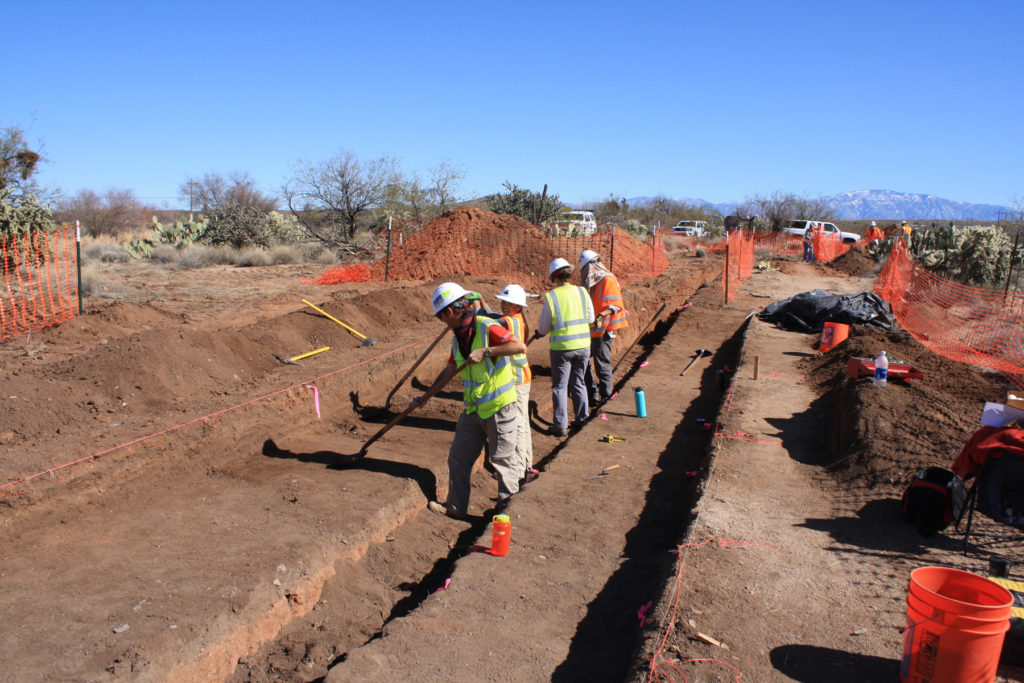
Given that the tops of the berms had been cut off and the project area was so narrow, we weren’t sure how much we would be able to tell about the construction and orientation of the court. The western berm had been hit harder with heavy equipment than the eastern one had. Because the floor wasn’t plastered and the berms were made from the same material the court was dug into, it was going be hard to determine where the surface of the ballcourt ended and the disturbed berm area began.
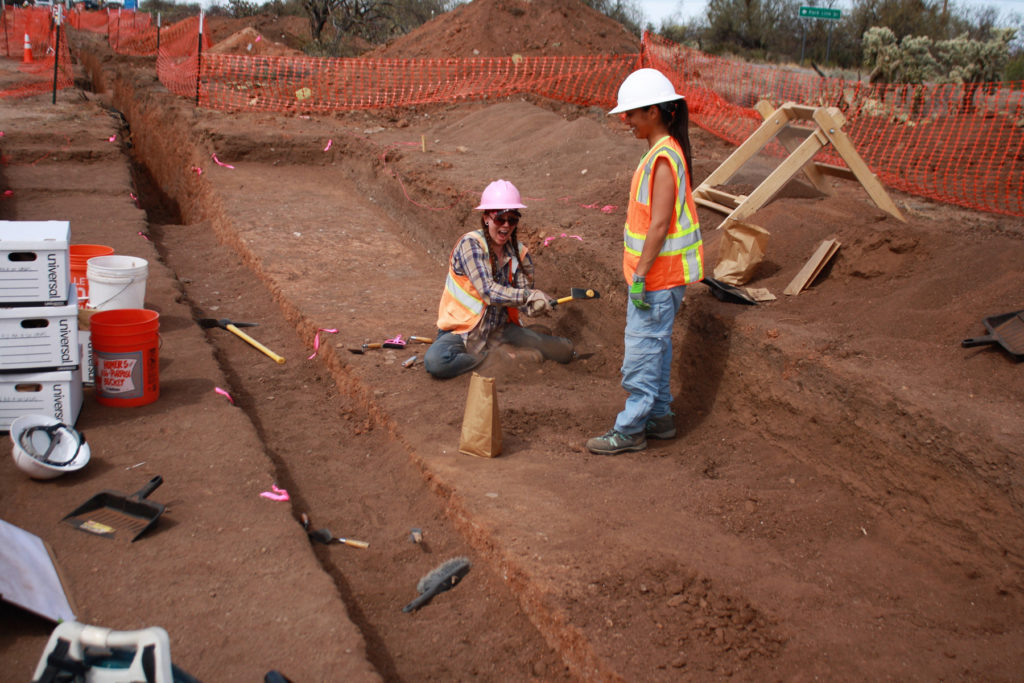
Using the tried-and-true logic of working from the “known” to the “unknown,” we started excavating in the center of the basin and worked outward toward the berms. That way, we could follow the surface up to where the disturbance began and we were able to uncover what was left of the berms.
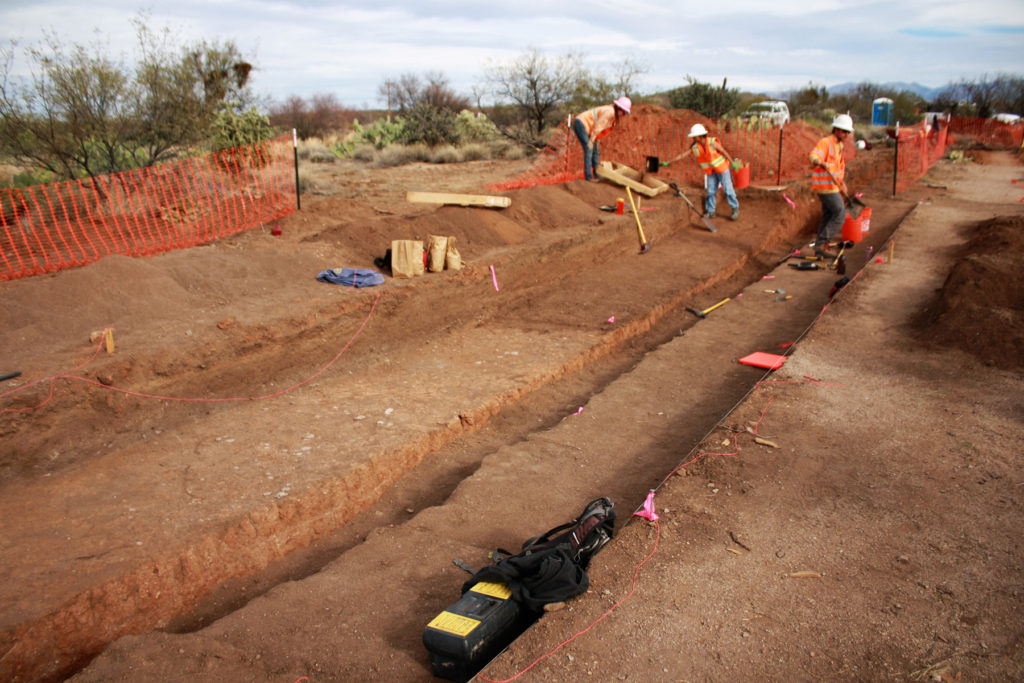
Once we removed the fill, we could see that the lowest part of the ballcourt extended down its center in a linear fashion. The eastern berm, which was much easier to see than the western one, ran parallel to this lowline, allowing us to infer that the ballcourt was oriented along an almost perfect north–south axis.
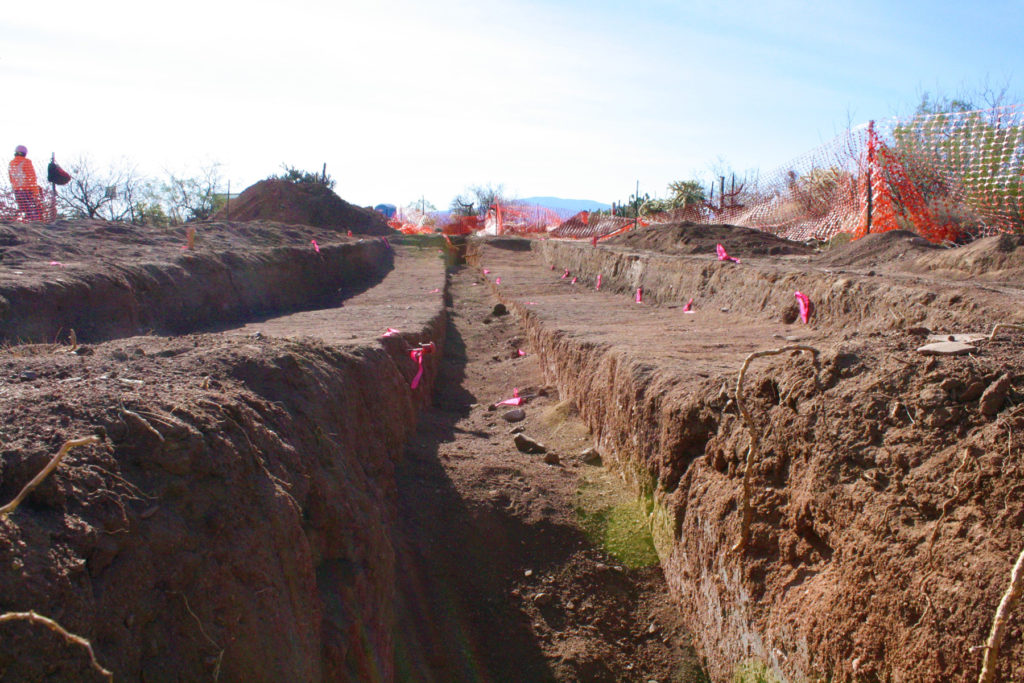
The low part also had a small, round, shallow pit filled with ashy sediments that were different from the fill of the ballcourt. This pit may represent a centerline marker, a feature that archaeologists have documented in other Hohokam ballcourts and in courts in western Mexico.
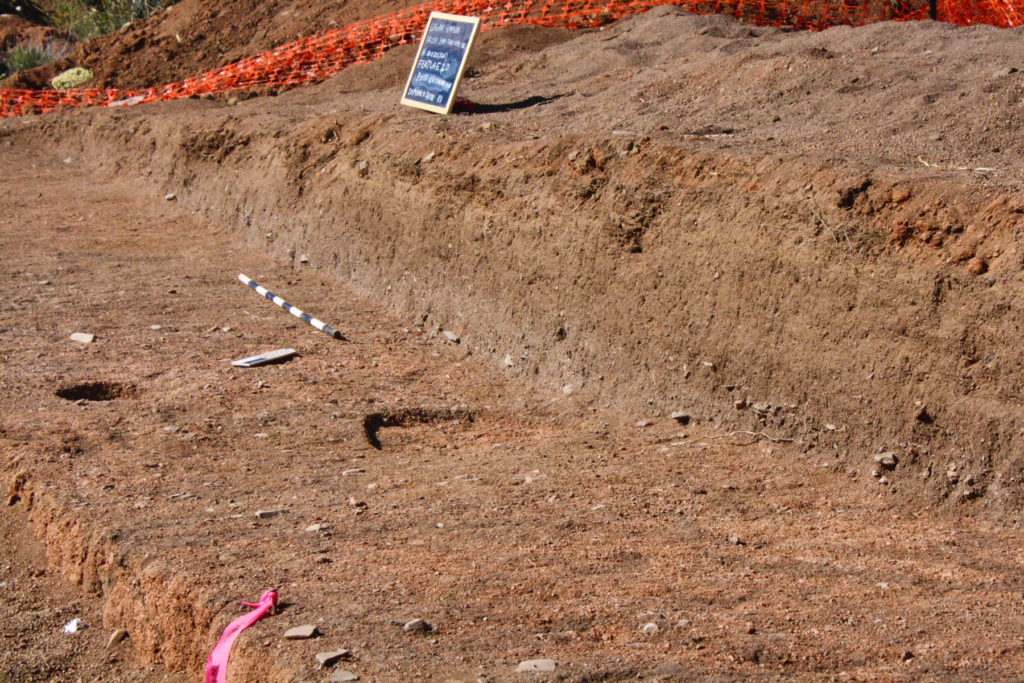
The only other feature in the ballcourt was a posthole, which was offset from the centerline. Because the narrow project area bounded the extent of our excavations, we couldn’t determine what sort of structure this post was used to support.
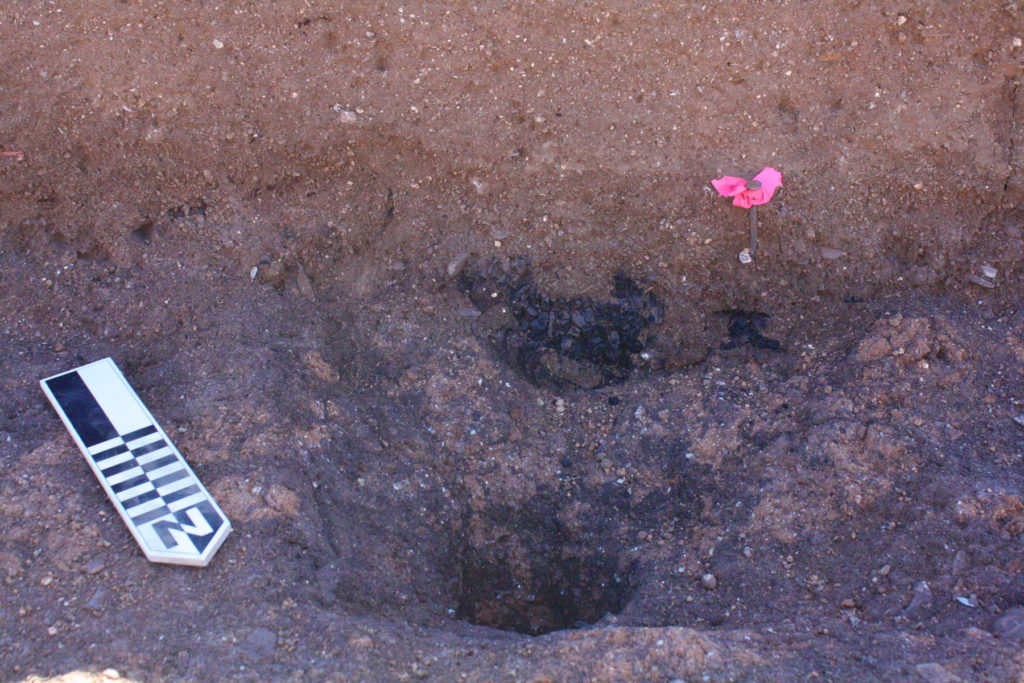
Even though we were limited to a 10-foot-wide excavation area that cut the ballcourt at an oblique angle, we were able to learn quite a bit about it:
- The long axis of the ballcourt was oriented north–south.
- The ballcourt’s surface was unplastered, but probably stone smoothed.
- People probably made the berms of the ballcourt from the same material that had been excavated from the center of the court during its construction.
- It is very likely that the court had centerline markers.
- People probably used the ballcourt during the early to middle Sedentary period (A.D. 950–1080), and later generations filled it with household trash.
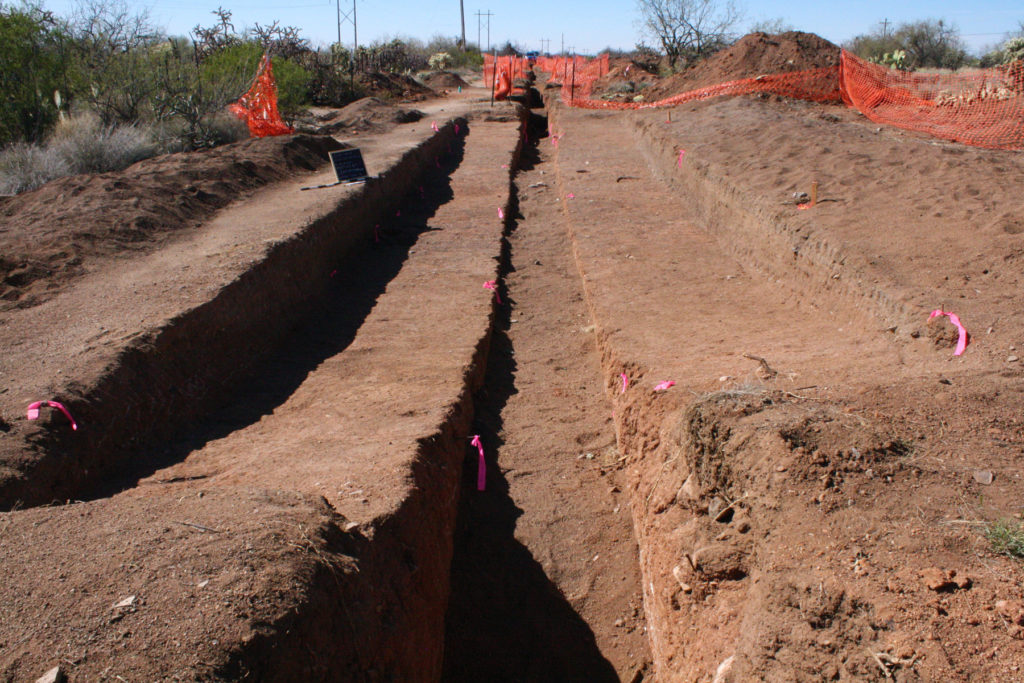
Thank you to Desert Archaeology and Logan Simpson for inviting me to be part of this project. It was a great experience that came at an opportune time!
